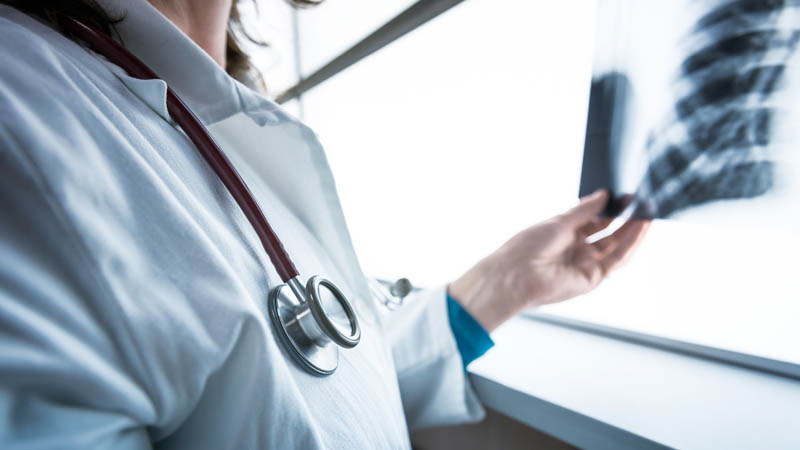Overview
What Is Lung Cancer?
Lung cancer occurs when cells in the lungs grow in an out-of-control manner. Cancer cells can spread to other areas in the lungs or they can travel to other parts of the body.
Lung cancer is the third most common cancer in the U.S. Lung cancer is the number one cause of cancer deaths in the U.S.
Types of Lung CancerMost lung cancers are classified as carcinomas, meaning they start in the lining or covering tissue of the organ. There are several types of lung cancer that vary based on the type of cells affected and how the cancer spreads. Lung cancer is grouped into two categories and treatments for these kinds of cancer are very different.
Non-small cell lung cancer (NSCLC): This category accounts for about 80% to 85% of lung cancer cases. There are a few different types of NSCLC. The most common forms include:
- Adenocarcinoma: About 40% of lung cancers fall in this category, which occurs most often in current or former smokers, although it is also common in nonsmokers. This lung cancer is usually slow growing.
- Squamous cell carcinoma: About 25% to 30% of lung cancers are this type, and they are often linked to a history of smoking. This cancer is often found in the central parts of the lungs.
- Large cell carcinoma: About 10% to 15% of lung cancers are this form of cancer. This has a tendency to grow quickly.
Small cell lung cancer (SCLC): This type accounts for about 10% to 15% of lung cancer cases. This type of lung cancer may grow and spread faster than NSCLC.
SCLC occurs most commonly in smokers, and typically forms in the bronchial tubes, creating large tumors that can spread (metastasize) throughout the body.
Symptoms of Lung Cancer
Symptoms of lung cancer may not be present in the early stages of the disease. Symptoms that may occur in advanced stages of lung cancer include the following. If you are experiencing any of these symptoms, please contact your physician:
- Persistent, worsening cough
- Constant chest pain
- Wheezing
- Hoarseness
- Unexplained weight loss
- Loss of appetite
- Shortness of breath or trouble breathing
- Coughing up blood or rust-colored mucus
- Shoulder pain
- Bone pain
- Recurrent pneumonia or bronchitis
- Enlarged lymph nodes in the neck
- Jaundice (yellowing of skin and whites of eyes)
- Seizures, headache or confusion
- Drooping eyelid




